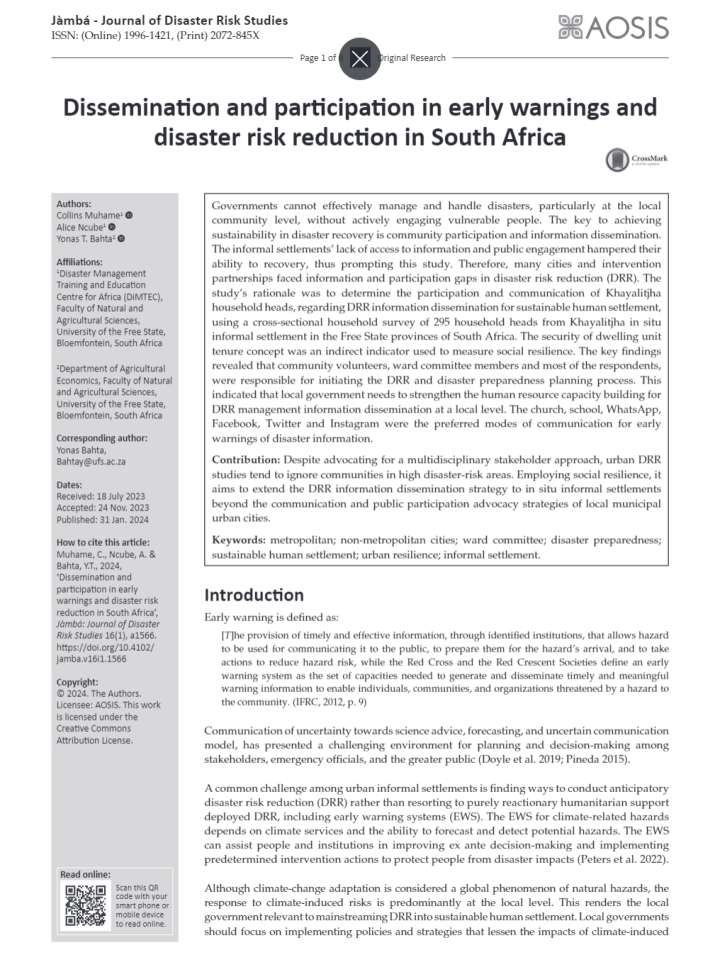Dissemination and participation in early warnings and disaster risk reduction in South Africa
This study determined the participation and communication of Khayalitjha household heads, regarding DRR information dissemination for sustainable human settlement, using a cross-sectional household survey of 295 household heads from Khayalitjha in situ informal settlement in the Free State provinces of South Africa. The security of dwelling unit tenure concept was an indirect indicator used to measure social resilience. This study posits that governments cannot effectively manage and handle disasters, particularly at the local community level, without actively engaging vulnerable people.
Key findings from the publication includes:
- Community volunteers, ward committee members and most of the respondents, were responsible for initiating the DRR and disaster preparedness planning process;
- Church and school were the first preferred mode of communication for early warnings and disaster information dissemination. It is concluded that the legislative structures, such as the Ward Councillors and the Community Police forums, must be empowered to gain trust from informal settlement communities;
- The study further recommends that local government needs to enhance human resource capacity building for DRRM information dissemination at a local level. The legislative structures need to be strengthened to gain the trust of informal settlement communities. Last but not least, the community needs to embrace the new paradigm shift of rapid digitalisation.
Explore further
